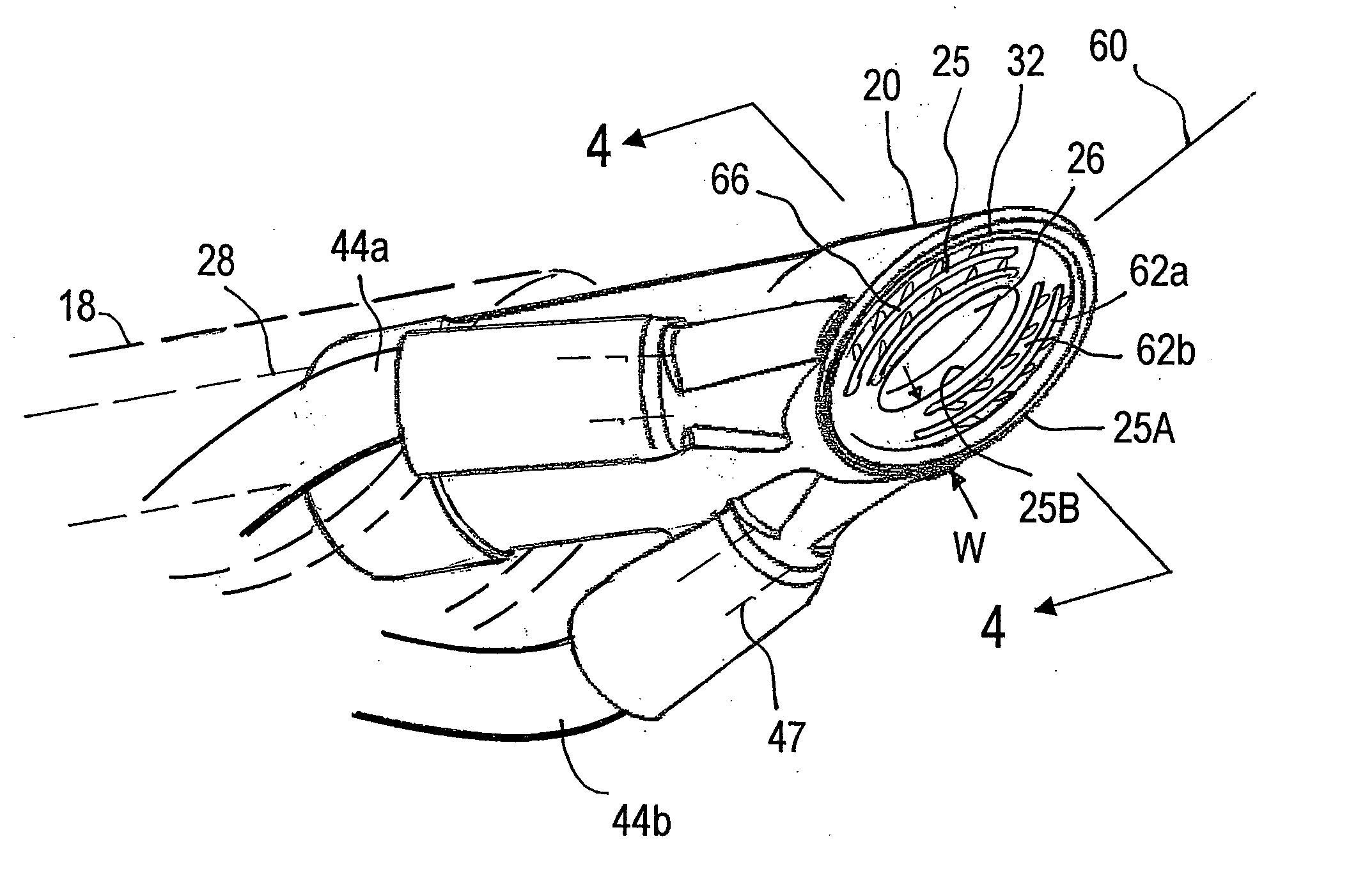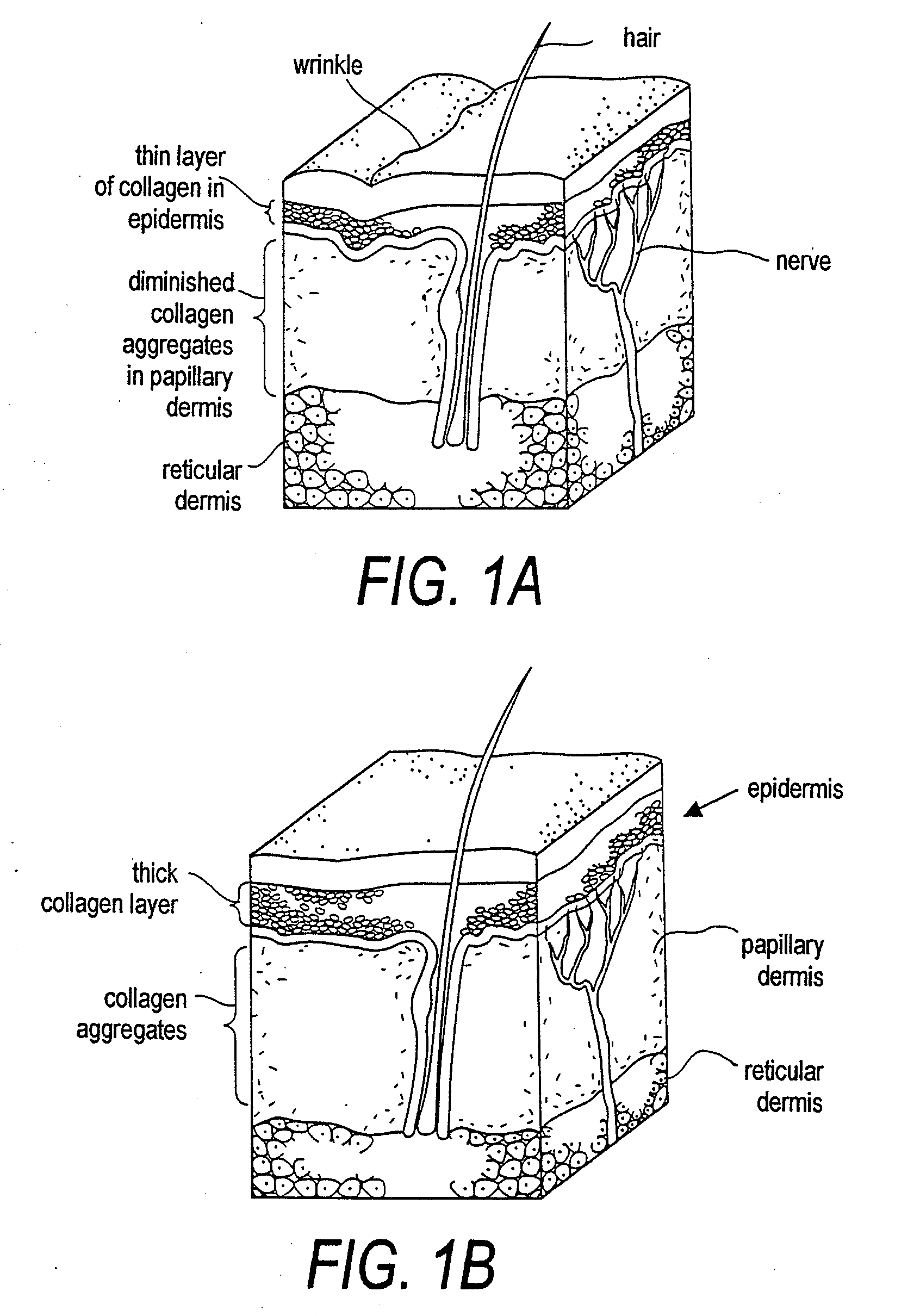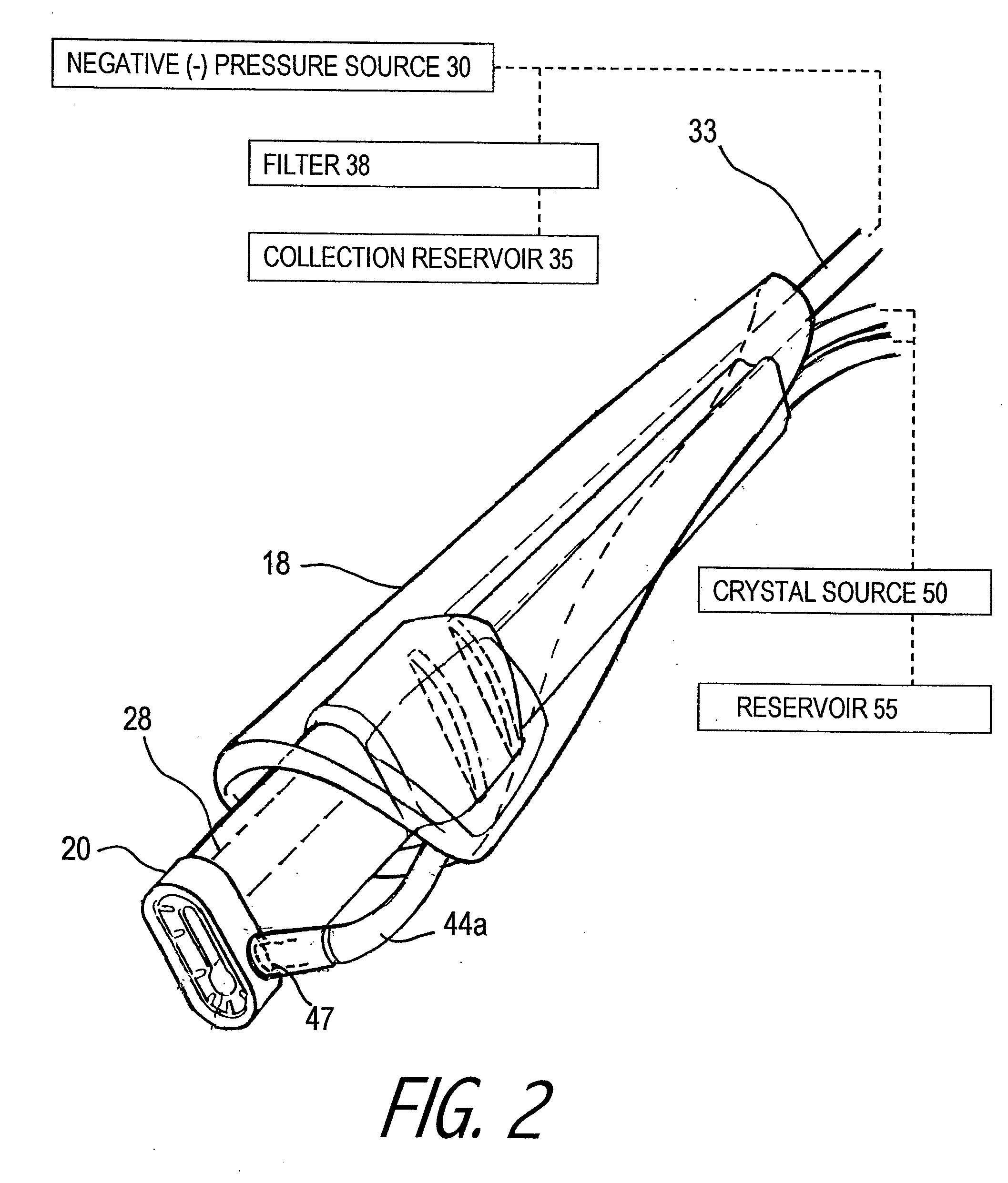Instruments and techniques for controlled removal of epidermal layers
a technology of epidermal layers and instruments, applied in the field of hand-held instruments, can solve the problems of scarring, new skin layers, and ineffective superficial exfoliation in treating many forms of skin damag
- Summary
- Abstract
- Description
- Claims
- Application Information
AI Technical Summary
Benefits of technology
Problems solved by technology
Method used
Image
Examples
Embodiment Construction
[0022] 1. Type “A” Skin Resurfacing System. Referring to FIGS. 2-3, an exemplary instrument system 5 is shown for removing superficial skin layers. The instrument system 5 includes: (i) a hand-held body 18 with a working end 20 that defines a skin interface surface portion indicated at 25 in FIGS. 2-3. An opening portion 26 transitions into an interior passageway 28 that extends through the body to communicate with a negative (−) pressure source (or aspiration source) indicated at 30 that operates as vacuum means for aspirating skin debris from a targeted skin surface treatment site TS.
[0023] Of particular interest, FIGS. 3-4 show views of the working end 20 with the skin interface 25 being configured with a particular irregular or ridged surface structure indicated at 32. The ridged surface structure 32 further has a particular minimum width dimension W to accommodate from the ridge shape with as many as about 25 ridges on each side of opening 26 depending on the overall dimension...
PUM
 Login to View More
Login to View More Abstract
Description
Claims
Application Information
 Login to View More
Login to View More - R&D
- Intellectual Property
- Life Sciences
- Materials
- Tech Scout
- Unparalleled Data Quality
- Higher Quality Content
- 60% Fewer Hallucinations
Browse by: Latest US Patents, China's latest patents, Technical Efficacy Thesaurus, Application Domain, Technology Topic, Popular Technical Reports.
© 2025 PatSnap. All rights reserved.Legal|Privacy policy|Modern Slavery Act Transparency Statement|Sitemap|About US| Contact US: help@patsnap.com



